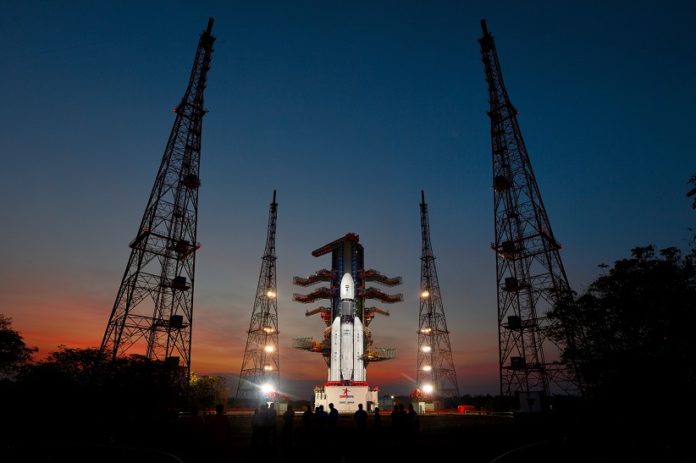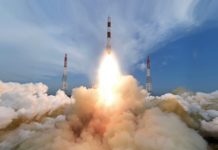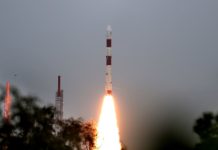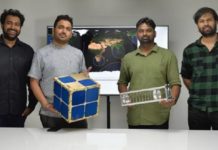India’s space agency, the Indian Space Research Organisation (ISRO), has announced an upcoming launch in December 2017. This is likely to be ISRO’s last launch of the year, and will feature its Polar Satellite Launch Vehicle (PSLV) carrying Cartosat-2ER, an earth observation satellite part of the Cartosat-2 series, along with, according to the Times of India, another 30 piggyback satellites.
The upcoming launch of Cartosat-2ER will also be ISRO’s first launch since its failed launch of the IRNSS-1H navigation satellite in August this year. Following the Cartosat-2ER launch, ISRO aims to conduct several more important launches in early 2018, including its second Moon mission Chandrayaan-2. SpaceTech Asia takes a look at what ISRO has done this year, and what to expect in the next few years.
From the 60s to 2016
India started its space agency, now known as ISRO, in 1962. The agency started by building sounding rockets, instruments and satellites, and finally successfully launched its own rocket, the SLV-3, in 1980. Following that, it built the Augmented Satellite Launch Vehicle (ASLV), which was successfully launched only once, in 1994.
The same year, ISRO launched the PSLV. It has since become ISRO’s workhorse and is generally regarded to be one of the most reliable and cost-effective launch vehicles to Low Earth Orbit (LEO), experiencing a complete failure only once (this year) since its first successful launch, chalking up a total of 39 successful flights.
Aside from the PSLV, ISRO has two larger launch vehicles – the Geosynchronous Satellite Launch Vehicle (GSLV), and the GSLV Mark III, which was launched for the first time this year.
So far, ISRO has placed 92 of its own spacecraft into orbit, excluding student satellites, and has launched 209 satellites from other nations. Three of these spacecraft have been for space exploration – India’s Moon mission Chandrayaan-1, its Mars mission the Mars Orbiter Mission (MOM), and its space observatory AstroSat. The latter has – according to Director of the Liquid Propulsion Systems Centre (LPSC) S. Somanath – gathered over 400 observations made public on a dedicated website.
Aside from the three, ISRO’s other spacecraft are satellites purposed for Earth Observation, communication and navigation. Of these, ISRO has four significant constellations – the Cartosat and Resourcesat series for earth observation and remote sensing, the IRNSS series for regional navigation, and the GSAT series for communication and earth observation.
Significant achievements in 2017
This year, ISRO has had five rocket launches, with its sixth to take place in the second half of December. All of them were noteworthy for various reasons:
The first ISRO launch this year, which saw the PSLV launching 104 satellites simultaneously, broke the world record for the number of satellites launched at one go. The launch’s primary payload was Cartosat-2D, with a launch mass of 712 kg, with 103 secondary payloads including 88 satellites owned by U.S. NewSpace firm Planet.
Said S. Somanath, “The commercial aspect of this launch was in terms of monetary benefits. It may be small, but it is an opportunity for small satellite providers to piggyback launch in large numbers. This is the capability that we offer in the business side”.
Following that, ISRO launched the communication and earth observation satellite GSAT-9 in March, using a GSLV Mark II rocket. The first GSAT launch in 2017, GSAT-9 is an important milestone in India’s diplomatic relations with its neighbours – the Indian-made satellite is being used by all South Asian countries (excluding Pakistan), and has thus been dubbed the “South Asia Satellite”. According to S. Somanath, the satellite is being used for “disaster management, meteorological data-sharing and scientific research, VSATs, telemedicine, and others”.
ISRO’s third launch on June 5 saw its new GSLV Mark III, ISRO’s heaviest launcher to date, successfully placing GSAT-19 into orbit. Besides being the maiden flight of the new launch vehicle, the GSLV Mark III was also groundbreaking for its indigenous cryogenic upper stage engine; this engine was something ISRO had been working towards since 1994, and will be an important component in ISRO’s future manned spaceflight programme.
The same month, ISRO used its PSLV to launch Cartosat-2E along with 29 nanosatellites, including, surprisingly, one nanosatellite belonging to China’s National University of Defense Technology (NUDT). According to Indian newspaper The Hindu, this was denied by ISRO, who said it was a Belgian satellite; however, the launch of NUDTSat, as it is known, was published on China’s People’s Liberation Army (PLA) English new website China Military Online. ISRO’s claim is not entirely unfounded – the nanosatellite, reportedly going by the name NUDTSat, is part of the international QB50 project based in Belgium.
Finally, on August 31, ISRO launched navigation satellite IRNSS-1H, with a PSLV. The launch was declared a failure, but results from the investigation have not yet been released. IRNSS-1H was meant to replace IRNSS-1A, which had failed due to an issue with its atomic clock.
Outside of India, ISRO launched its GSAT-17 with Arianespace’s heavy lift launcher Ariane-5, which ISRO usually uses for its heavier satellites.
2018 and beyond
According to S. Somanath, ISRO’s main aim is “to promote the use of space in nation-building, which includes geospatial governance and also disaster risk reduction, looking at the sustainable development theme at different sectors – food security, shelter, health security, infrastructure, water resources, energy security.”
As such, India plans to increase its 7-satellite IRNSS constellation to 11 satellites, eventually leading to a 24-satellite Global Indian Navigational System (GINS) constellation. Along with this, ISRO and other research institutions are developing indigenous atomic clocks, possibly with the help of Israel.
ISRO is also increasing its engagement with the private sector, by inviting more private companies to participate in the manufacturing of launch vehicles and satellite. Recently, the organisation released tenders for private companies to contribute to the manufacturing of cryogenic engines, and, according to news reports, has invited the private sector for the manufacture of its PSLVs and satellites.
Three significant missions are to expected from ISRO in the coming years. Next year, along with India’s second moon mission Chandrayaan-2, ISRO plans to conduct the second test flight of its reusable launch vehicle prototype, the RLV-TD. According to S. Somanath, the actual winged shuttle, known as the Reusable Launch Vehicle (RLV), is slated for launch in 2019.
Like the other major spacefaring nations, ISRO also plans to launch a second Mars mission in 2020, according to S. Somanath, and a Venus mission in 2023. The organisation is also purportedly working on an orbital launch vehicle for manned spaceflight, a solar probe, and a moon mining mission by 2030.







